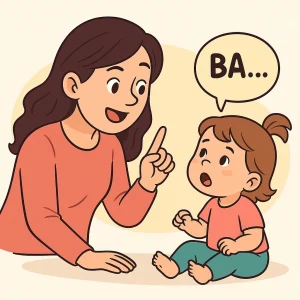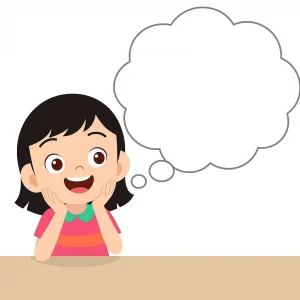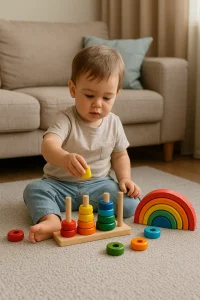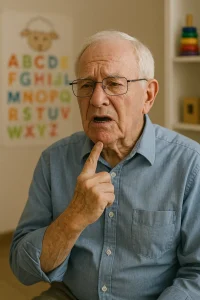15 Best Speech Therapy Techniques for Managing Dysarthria
By Rajini D
Last Updated: April 3, 2025
Dysarthria is a speech disorder that arises when the muscles involved in speaking weaken or become difficult to control. This condition often stems from brain changes due to strokes, traumatic brain injuries, or neurological disorders like Parkinson’s disease and multiple sclerosis. The resulting speech may be slurred, slow, and challenging to comprehend. Employing effective speech therapy techniques for dysarthria is essential as it directly influences an individual’s capacity to communicate effectively with others.
Speech therapy plays a vital role in managing dysarthria. By working with a speech-language pathologist (SLP), individuals can learn effective speech therapy techniques for dysarthria to improve the clarity of their speech, enhance their communication abilities, and regain confidence in their daily interactions. Therapy may include exercises to strengthen oral muscles, strategies to control the pace and rhythm of speech, and tools to aid communication, tailored to each person’s specific needs.
What is Dysarthria?
Characteristics and Symptoms of Dysarthria
Dysarthria is characterized by slurred or slow speech that can be difficult to understand. Common symptoms include a lack of control over the muscles used in speech, which affects the ability to form and pronounce words. This can result in uneven speech volume, a monotone voice, and poor modulation that can be challenging for both the speaker and the listener. Symptoms can vary widely based on the underlying cause and severity of the muscle weakness.
Causes and Impact on Communication
Dysarthria is often caused by neurological conditions such as stroke, brain injury, Parkinson’s disease, cerebral palsy, or multiple sclerosis. These conditions can affect the nerves that control the muscles necessary for speaking. The impact on communication can be significant, leading to difficulties in everyday interactions and social isolation. This can affect a person’s ability to participate in conversations, leading to frustration and decreased quality of life.
Know more about our article on Top 10 Causes of Dysarthria in Children Every Parent Should Know
How Can Speech Therapy Help?
The Goal of Speech Therapy in Dysarthria Management
The primary goal of speech therapy for dysarthria is to enhance and maximize an individual’s ability to communicate effectively. Speech-language pathologists employ various speech therapy techniques for dysarthria to improve the clarity of speech, control of breathing, and overall communication skills of their patients. This is achieved through a personalized therapy plan that is specifically tailored to meet the unique needs of each individual, taking into account the specific aspects of their condition.
Various Therapy Techniques
Speech therapy employs a variety of techniques to address the diverse needs of those with dysarthria. These may include:
- Articulation Exercises: Help strengthen muscles and improve the clarity of speech.
- Breath Support Techniques: Teach patients how to better control their breathing to aid speech production.
- Voice Therapy: Focuses on improving vocal pitch, volume, and quality.
- Augmentative and Alternative Communication (AAC): Provides tools and devices to help express thoughts when speech is too impaired.
Top 15 Speech Therapy Techniques for Managing Dysarthria
Technique 1: Articulation Exercises
Articulation exercises are crucial for individuals with dysarthria, aiming to enhance the precision of speech production. These exercises focus on improving the clarity and accuracy of speech sounds. Therapists often use repetitive practices that involve exaggerating consonants and vowels, helping patients gain better control over their speech muscles.
Technique 2: Breath Support Activities
Effective speech requires robust breath support. For those with dysarthria, learning to control breathing can significantly clear speech. Breath support activities might include exercises like deep breathing, controlled exhale, and using breath to power speech, which helps in producing stronger and more sustained speech sounds.
Technique 3: Pacing and Rhythm Adjustments
Regulating the pace and rhythm of speech can prevent the slurring of words and make speech easier to understand. Techniques like using a metronome to pace speech or deliberate pausing can give individuals better control over their speech tempo, making communication more effective.
Technique 4: Volume and Intensity Control
Volume and intensity control methods teach individuals how to modulate their speech volume appropriately, which can be a challenge for those with dysarthria. Techniques may involve exercises to adjust the loudness of speech to ensure it’s neither too soft nor too forcefully projected.
Technique 5: Phonation Improvement Exercises
Phonation exercises are designed to strengthen the vocal cords and improve voice quality. These might include humming, vowel prolongation, and pitch range exercises, all aimed at enhancing vocal control and reducing breathiness or harshness in the voice.
Technique 6: Oral Motor Exercises
Improving the strength and coordination of the mouth and jaw muscles is the focus of oral motor exercises. These exercises, including lip trills, tongue stretches, and cheek puffing, help in better articulation and reduce speech distortions.
Technique 7: Phonetic Placement Techniques
Phonetic placement techniques teach the correct placement of the tongue, lips, and jaw for producing specific sounds. This method is especially helpful in correcting articulatory inaccuracies and improving speech clarity.
Technique 8: Resonance Control
Resonance control techniques aim to adjust voice quality by changing the vocal tract configurations. This can involve nasal resonance exercises and voice projection techniques to balance the tone and improve overall speech quality.
Technique 9: Prosody Enhancement
Prosody enhancement focuses on the intonation, stress, and rhythm of speech. Exercises might include reading passages with varying emotional tones or using speech modulation software to practice intonation patterns, helping patients communicate more naturally.
Technique 10: Augmentative and Alternative Communication (AAC)
For those who cannot rely solely on oral speech, AAC devices such as speech-generating devices or picture boards can be lifesavers. These tools help express thoughts and needs, enhancing communication effectiveness.
Also read: Understanding Augmentative and Alternative Communication (AAC) for Your Child
Technique 11: Visual Feedback Technology
Using mirrors or video technology, visual feedback helps individuals see their articulation in real-time, allowing for immediate correction and adjustment of speech patterns.
Technique 12: Sensory Feedback Techniques
Incorporating sensory feedback through tactile cues or auditory feedback helps reinforce correct speech production. Techniques may include using touch to feel throat vibrations or auditory feedback to monitor speech loudness and clarity.
Technique 13: Cognitive-Linguistic Exercises
These exercises target the cognitive aspects of speech such as attention, memory, and problem-solving, which are crucial for effective communication. Activities might involve multitasking while speaking or memory recall tasks to enhance cognitive support for speech.
Technique 14: Group Therapy Sessions
Group therapy provides a supportive environment where individuals can practice communication skills with peers, gaining confidence and fluency. It also offers social interaction and peer feedback, which are important for therapy progress.
Technique 15: Intensive Therapy Programs
Intensive therapy programs involve concentrated and frequent therapy sessions designed for rapid improvement. These programs are tailored to the individual’s specific needs and often include a mix of the techniques listed above for comprehensive treatment.
Cultural Sensitivity in Speech Therapy
Understanding Diverse Needs
In the realm of speech therapy, recognizing and respecting cultural differences is as crucial as any therapeutic exercise or technique. Culturally sensitive speech therapy goes beyond mere translation of services into the patient’s language; it involves an understanding of cultural nuances that influence communication styles, gestures, and the interpretation of speech norms. Tailoring therapy to fit cultural and individual needs ensures that each patient receives not only clinically effective but also personally respectful care.
For instance, certain cultures may have specific beliefs about medical treatments, including speech therapy, or might use non-verbal communication more predominantly. Recognizing these differences and incorporating them into therapy plans can significantly enhance the effectiveness of the treatment and comfort of the patient. Wellness Hub prides itself on creating a therapy environment that respects and adapts to these diverse cultural backgrounds, ensuring that every patient feels understood and valued.
How Wellness Hub Helps
Tailored Speech Therapy Solutions at Wellness Hub
At Wellness Hub, we understand that each case of dysarthria is unique, requiring a specialized approach tailored to each individual’s needs and circumstances. Our commitment to personalized care ensures that every treatment plan is as unique as the person it serves, incorporating advanced tools and methodologies to deliver effective results.
Personalization of Therapy
We begin with a comprehensive assessment that evaluates speech, language, cognitive-communication abilities, and swallowing functions. This thorough evaluation helps us understand the specific challenges and strengths of each client. Based on these insights, we develop a personalized therapy plan that targets the most impactful areas for improvement.
For instance, if a client struggles with speech clarity due to muscle weakness, we may incorporate intensive oral motor exercises along with digital tools that provide visual feedback on tongue placement and articulation. This combination not only helps improve muscle strength but also enhances the precision of speech production.
Conclusion
At Wellness Hub, we’re committed to making speech therapy personal and powerful. Our tailored approach combines the latest tools and heartfelt care to help those with dysarthria speak more clearly and confidently. Every therapy plan is crafted to meet individual needs, blending technology with traditional techniques for optimal results. We celebrate every success story as a step toward better communication and a better life. Explore more about how we can help on our Speech Therapy Services page. Join us at Wellness Hub, where your voice matters, and every word counts!
Frequently Asked Questions:
1. What is dysarthria in children?
Dysarthria is a condition where children have difficulty speaking clearly due to muscle weakness in their mouth and face. It can make their speech slow, slurred, or quiet.
2. How can speech therapy help my child with dysarthria?
Speech therapy helps by strengthening the muscles used in speech, improving clarity, and teaching strategies to make speaking easier and more understandable.
3. What are the best speech therapy techniques for dysarthria?
Effective techniques include articulation exercises, breath support activities, and the use of augmentative communication devices to enhance speech clarity and fluency.
4. Can speech therapy exercises be done at home?
Yes, many speech therapy exercises can be practiced at home. Therapists often provide families with guidelines and activities to continue therapy outside of sessions.
5. How long does it take to see improvements in speech with therapy?
Improvement times can vary, but many parents notice positive changes in their child’s speech clarity and confidence within a few months of regular therapy.
6. What role do parents play in speech therapy for dysarthria?
Parents are crucial in reinforcing exercises and strategies at home. Consistent practice is key to success in speech therapy.
7. What is augmentative and alternative communication (AAC) and how can it help?
AAC includes various methods and devices that support or replace speech, like picture boards or electronic communicators, especially useful for children who struggle with verbal communication.
8. How do I choose the right speech therapist for my child with dysarthria?
Look for a speech-language pathologist who has experience with pediatric dysarthria and a compassionate approach that aligns with your child’s needs and your family’s values.
9. Where can I find more resources about managing dysarthria in children?
For more information and resources, visit our Speech Therapy Resources page at Wellness Hub, where you’ll find a range of supportive materials and contact details for expert help.
About the Author:
Rajini Darugupally
M.Sc., Speech-Language Pathologist (9+ years of experience)
Rajini is a passionate and dedicated Speech-Language Pathologist with over 9+ years of experience, specializing in both developmental speech and language disorders in children and rehabilitation in adults. Driven by a desire to empower each individual to find their voice, Rajini brings a wealth of experience and a warm, genuine approach to therapy. Currently, at Wellness Hub, she thrives in a team environment that values innovation, compassion, and achieving results for their clients.
Book your Free Consultation Today
Parent/Caregiver Info:
Client’s Details:
* Error Message








